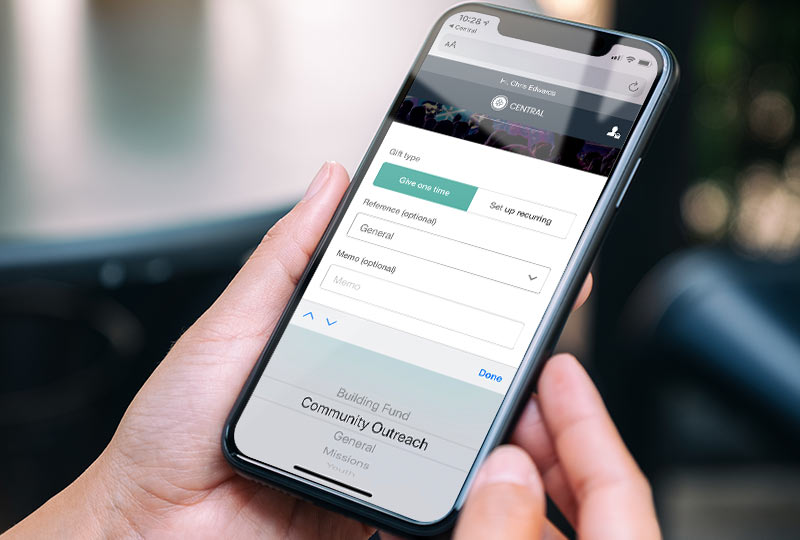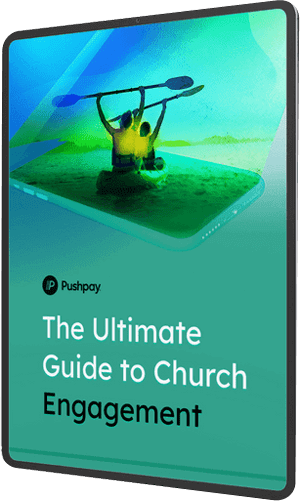5 Tips for Communicating With New Givers
For more Coronavirus Resources to Help you and Your Congregation Stay Connected When it’s Critical check out: The Church Leader’s Guide to Coronavirus: How to Continue Ministry During a Pandemic
Communities are being told to stay safe due to the current conditions we are faced with today. Since a majority of areas have been ordered to “stay at home,” your congregation will most likely see an influx not only in your digital attendance but in first-time giving in the next couple weeks. In fact, so far in March, we’ve seen a 69 percent increase in new online donors giving via Pushpay compared to February. More so, the number of offline conversions–people that move from giving physically to giving digitally–has increased by 122 percent during that same period. That is a significant opportunity for your church.
When someone gives to your church for the first time, that’s a great step forward on their member journey. They’ve just made a choice to participate in your mission and invest in your ministry. They’re also showing a desire and willingness to trust God (and you) with the resources He gives them, which is an important part of developing a mature Christian faith.
But there’s still a big difference between a first-time giver and a regular giver. And if you want your first-time givers to become faithful, dependable contributors to your church’s mission, you need to keep them engaged and guide them toward even greater generosity and maturity.
Here are five tips for doing that:
1. Do more with your confirmation emails, show your appreciation
A good digital giving platform automatically sends a confirmation email when someone gives through your website, church app, or giving kiosk. But this transactional email can be more than just a receipt.
Confirmation emails are your first opportunity to engage someone after they give to your church. Don’t just tell people that the transaction was processed—thank them, and tell them more about what they’ve just done. If they gave to a specific fund, your confirmation email could include a note about how that fund is used, your goals for it, or the tangible things their donation will help you accomplish.
With Pushpay, thank you by fund makes it easy to create custom transaction receipts for each of your funds (it’s also easy to create new funds as needs arise in your community).
2. Give them a reason to give again
As your church becomes aware of new needs within your community or you launch short-term projects (i.e. campaigns to help those in your congregation who’ve been affected by COVID-19, or helping donate to homelessness during the current season), these are great opportunities to invite first-time givers to give again. First-time givers are most likely to give again if you can highlight tangible ways that their giving can make a difference or make them feel like they’re contributing to a specific need (rather than just paying salaries or keeping the lights on).
You can easily create limited-time giving campaigns and dedicated funds in your Pushpay app. So any time church members give, they can just select the right fund from a drop-down menu.

Highlighting specific needs and short-term goals is a great way to create energy and momentum around giving, and sometimes that’s what first-time givers need to give again.
3. Take advantage of your Donor Development Dashboard
Identifying your first-time givers is key in knowing who and how to encourage them to give again. Pushpay makes this easy to do through your Donor Development Dashboard. With filters based on giving habits, you can learn where each of your church members is in their giving journey.
Through the dashboard you’ll also be able to see the behavior of your church members (i.e. the progression of their giving, lapsed giving, and who’s lost or lessened their connection to your church), this is great intel as far as how you should communicate and what opportunities you should highlight to particular members.
Most importantly, the Donor Development Dashboard provides you with clear next steps to help you personalize messaging and move members from one stage of their giving journey to the next.
4. Create an email series for first-time givers
When someone gives for the first time, you don’t want to just throw them into your newsletter list—or worse, ignore them. This is a crucial moment to establish a stronger connection with them. And while an automated email series doesn’t feel as personal as a phone call, it’s much better for communicating at scale and maintaining a regular connection with every first-time giver.
(Plus, you can still make the automated emails from a real person at your church, such as your senior pastor—and reach out with phone calls too!)
The goal for an email series to first-time givers isn’t to ask them to give again. It’s to reinforce the value of what they’ve already done and help them see the role generosity plays in their spiritual growth.
Here are some things your email series might do for several weeks after someone gives for the first time:
Share the impact of their donation
Right off the bat, you want people to understand that their donation matters to your ministry and contributes to your mission. Tell them about what they’re helping you do in your community, your congregation, and the world. If people feel like their donation actually had an impact, they’ll be more motivated to do it again in the future.
Explain the spiritual significance of their gift
Stewardship is a crucial concept for Christians to understand. Everything we have belongs to God—He just lets us manage it. Tell your first-time givers more about why giving is such an integral part of our spiritual growth and how their decision to give reflects their trust and faithfulness.
Educate them about your ministries
Some people may attend your church for years before they give for the first time. Others may give after attending for a short time. Either way, you shouldn’t assume they already know about everything your church does. But you should assume they’re interested in what your church is doing—they literally just invested in it. So walk them through how each ministry reflects your mission and contributes to your larger goals.
Highlight other ways to get involved in your church
Similarly, you shouldn’t assume that a first-time giver is already attending a small group, volunteering, or taking advantage of other growth opportunities in your church. They may or may not be aware that these opportunities exist, they might not know how to actually get involved with them, and they could probably use a little encouragement to start.
Invite them to continue participating in your mission
The end of your email series for first-time givers is an appropriate time to encourage people to give again. Now that they know their donation mattered and that you see them as a participant in your mission, you can invite them to set a giving goal, make a pledge, or simply turn on recurring giving to help them make this decision into a discipline.
5. Send meaningful giving statements
For most churches, giving statements are a tedious annual government obligation. But like confirmation emails, they can be so much more. This is a form people expect to receive for tax purposes, but it’s also another opportunity to engage anyone who gives to your church—including first-time givers.
Giving statements don’t have to merely summarize giving activity. They can also highlight what your church has accomplished, tell stories about people whose lives have been changed through your ministry, and thank people for investing in your mission.
With Pushpay, you can send giving statements annually, biannually, once a quarter, or at another frequency that makes sense for your congregation.
Inspire them to give again
Just because someone gives to your church once doesn’t mean they’re fully on board. They just took their first baby step. They need your encouragement and support to keep giving. And they need you to show them why generosity should become a regular expression of their faith.
Guide to
Church
Engagement
Learn how to boost church engagement physically and digitally.

Featured Content
You May Also Like
